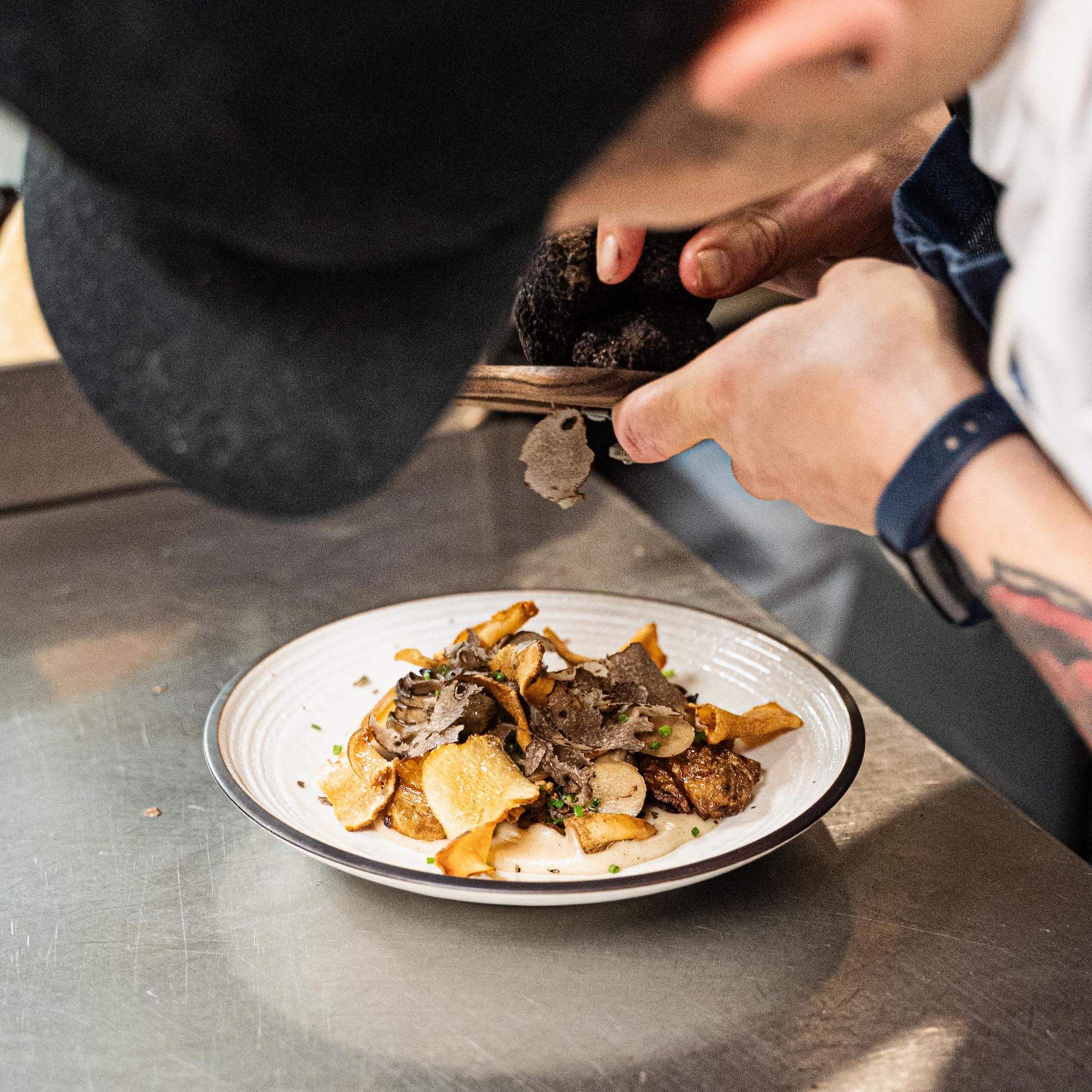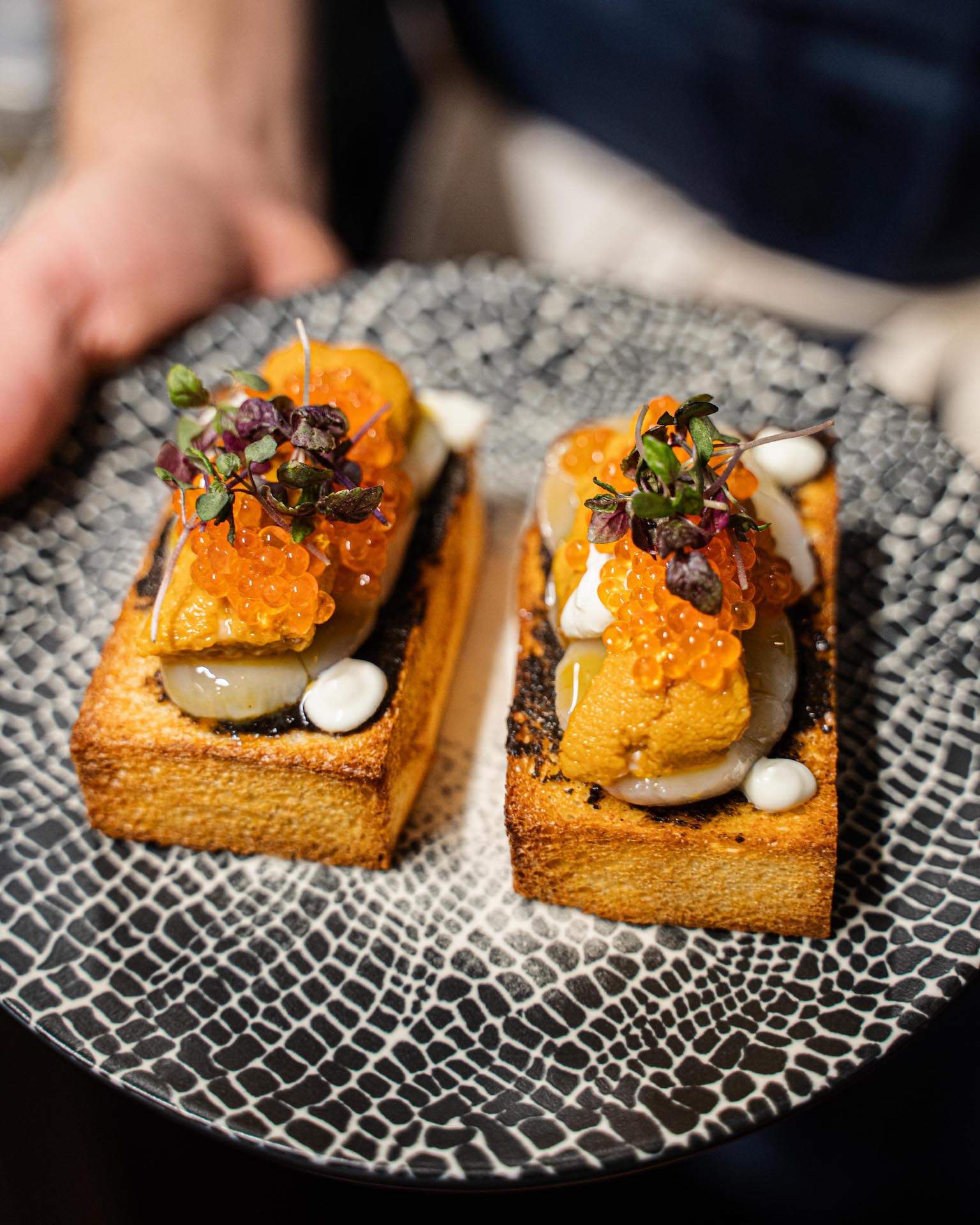When chef Ethan Seunghuyn Min of Bansang moved to San Francisco in 2018, he found a few casual Korean restaurants serving barbecue. He came to the same conclusion as many local diners: if you want good Korean food, you better catch a flight. “San Francisco Korean food was not really popular,” Min says. “Because of LA. It’s just really close. People would always go to LA to try all the Korean food.”
Thankfully, that’s no longer the case. A slew of exciting new Korean openings over the past few years have been bending and breaking the barbecue stereotype. Luckily, Asian American Pacific Islander Heritage Month provides the perfect excuse for a deeper dive.
Celeb chef Chris Oh brought Korean food to his hometown with the opening of Um.ma in 2019. That same year, Queens superette set up shop across the street. (In the Inner Sunset alone, there’s now a one-block trifecta between Um.ma’s fried chicken, Queens’s kimbap, and Art’s Cafe’s bulgogi hash browns.)
In upscale dining, star chef Corey Lee opened the Korean heritage restaurant San Ho Won in 2021, snagging one MICHELIN star. Suragan followed in 2022 with rave reviews for its regal tasting menu, earning a spot on the San Francisco Chronicle’s top restaurants. Everyday snacking got a boost thanks to Korean corn dogs with epic cheese pulls at Stix in 2020, and grocery shoppers lined up for the grand opening of San Francisco’s first H Mart in 2021.
Daeho Group’s rise as a Korean food hitmaker

Min’s restaurant, Bansang, has been blowing up reservations at OpenTable, where it’s been trending since opening in 2022. MICHELIN inspectors must have taken notice because they’ve added it to their guide this year.
Bansang is the latest from the Daeho group, a wildly popular restaurant group fueling the craving for Korean food in the Bay. In 1990, owner Daeho Hwang moved to San Francisco, where he’s run various Korean restaurants for the past 30 years. It wasn’t until Japantown Korean spot Daeho fired up the scene in 2019 that he found a voracious audience.
Daeho went viral for its kalbijjim, stuff that TikTok cravings are made of. The braised short rib dish is a cozy comfort in Korea but isn’t often seen in San Francisco. “Korean people love to put some cheese on any food,” Min attests. So the team ladles the sweet and spicy stew into stone pots, loads cheese curds on top, and blow-torches it at the table until bubbling. The fans go wild.
Daeho has grown to four locations, including the original in Japantown, Milpitas, San Mateo, and the H Mart food court in San Francisco. The group added barbecue spot YakiniQ in Japantown, cocktail bar Bonmot in Cupertino, and collaborated with patisserie Jina Bakes on its popular kalbijjim croissant, folding the savory stew into flaky pastry.
Another location of Daeho is opening in Las Vegas soon, and the restaurant group is eyeing Hawaii next. Plus, there’s a thrilling new hot dog partnership with popular Korean hot dog spot Oh! K-Dog for the upcoming H Mart in Dublin.
How Bansang became a darling of the group

Within the group, Bansang is the rising star. Hwang wanted something upscale so he hired a couple of fine-dining vets: Min grew up outside of Seoul and cooked at Gaon in Seoul (three MICHELIN stars), Saison (two MICHELIN stars), and Atelier Crenn (three MICHELIN stars) in San Francisco. Co-head chef Jin Lim comes from the port city of Pohang and cooked at Michael Mina, Kabuto Sushi, and Kinjo (one MICHELIN star) in San Francisco.
The two first met at Woosong University but became best friends in the Bay and conceived the Bansang menu together.
“We wanted to be more Californian. We’re Korean slash Calfornian,” Min says. “I want my restaurant to be the gateway for the people who have never tried Korean food or might not be familiar with those flavors.”
Their creative dishes fuse Californian seasonal ingredients with Korean fermented flavors and a touch of smoke. Banchan includes several types of kimchi, fermenting crunchy green tomatoes for a couple of weeks or bold daikon for more than two months.
The bestselling uni toast stacks buttermilk bread with rich urchin. Lime-soy fried chicken is tossed with bright herbs and shishito peppers. Chewy rice cakes arrive unexpectedly with Spanish chorizo and Mexican cotija, yet satisfy the Korean meat-and-cheese obsession. Large plates include a galbi New York strip marinated for 48 hours before it hits the binchotan grill.

The chilled mulwe noodles with cured cucumbers and pickled radishes might come the closest to traditional, Min says, while the kimchi fried rice reaches new depths of umami with soy-braised pork and a sprinkle of Parmesan. For dessert, the chefs play with splashes of milk, adding slightly nutty soy milk to cannelés and churning popular banana milk into ice cream.
Min is thrilled to see this rise in Korean food in tandem with a bigger spotlight on Korean culture. He was excited to see K-pop girl band Blackpink headlining Coachella, the television series Squid Game pulling the most views in Netflix history, and the movie Parasite winning four Academy Awards, including Best Picture.
Korean culture and cuisine are finally getting the attention they deserve, he says.
“Every time I talk to people about Korean food, they always think about kimchi and barbecue,” Min says. “But there’s much more than that.”
Becky Duffett is a food writer living and eating in San Francisco. Follow her on Instagram at @beckyduffett.




